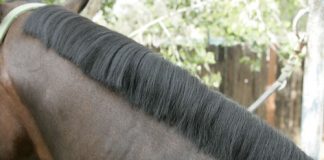Thinking about competing in saddle seat at your next show, but baffled by the class list? Or maybe you just want to be a more educated spectator the next time you attend a show with saddle seat classes. Here’s a simpliefied overview of the common saddle seat divisions for three different breeds. Click here to download a more detailed chart about the divisions.
| American Saddlebred | Arabian | Morgan | |
| Manners paramount; animation secondary | Country Pleasure | Country Pleasure | Classic Pleasure |
| Manners and animation both important | Show Pleasure | English Pleasure | English Pleasure |
| Animation paramount | Park | Park | Park |
Regardless of the class, a saddle seat horse should be built more vertically than his sport or western counterparts. The high neck carriage and more up-and-down motion (rather than the long, sweeping motion preferred in the hunter division) should come naturally.
Saddle seat horses often have an unfair reputation for being extremely hot. In some divisions, such as park or open three-gaited classes, the winning horses do tend to be very high-energy. However, most amatuer saddle seat exhibitors compete in the pleasure divisions, where good manners, obedience and demeanor are more important than high action and animation. Horses in the pleasure divisions can also be shown barefoot or plain shod, alleviating the concerns some riders have about using padded shoes.
Click here to download a chart that provides an overview of the saddle seat divisions and shoeing regulations.
Further Reading
Gaits of the American Saddlebred
Saddle Seat Equitation: Form to Function







Thanks
I was trying to find the January 2013 article “Saddle Seat Divisions Decoded”. I was going to share it on my Facebook page, however I can’t find it. Do you only keep articles for a certain amount of time?
The chart was extremely helpful. Saddle seat class titles have always been confusing to me, and then different breeds call the same class different things. Thanks for clearing this up for me!